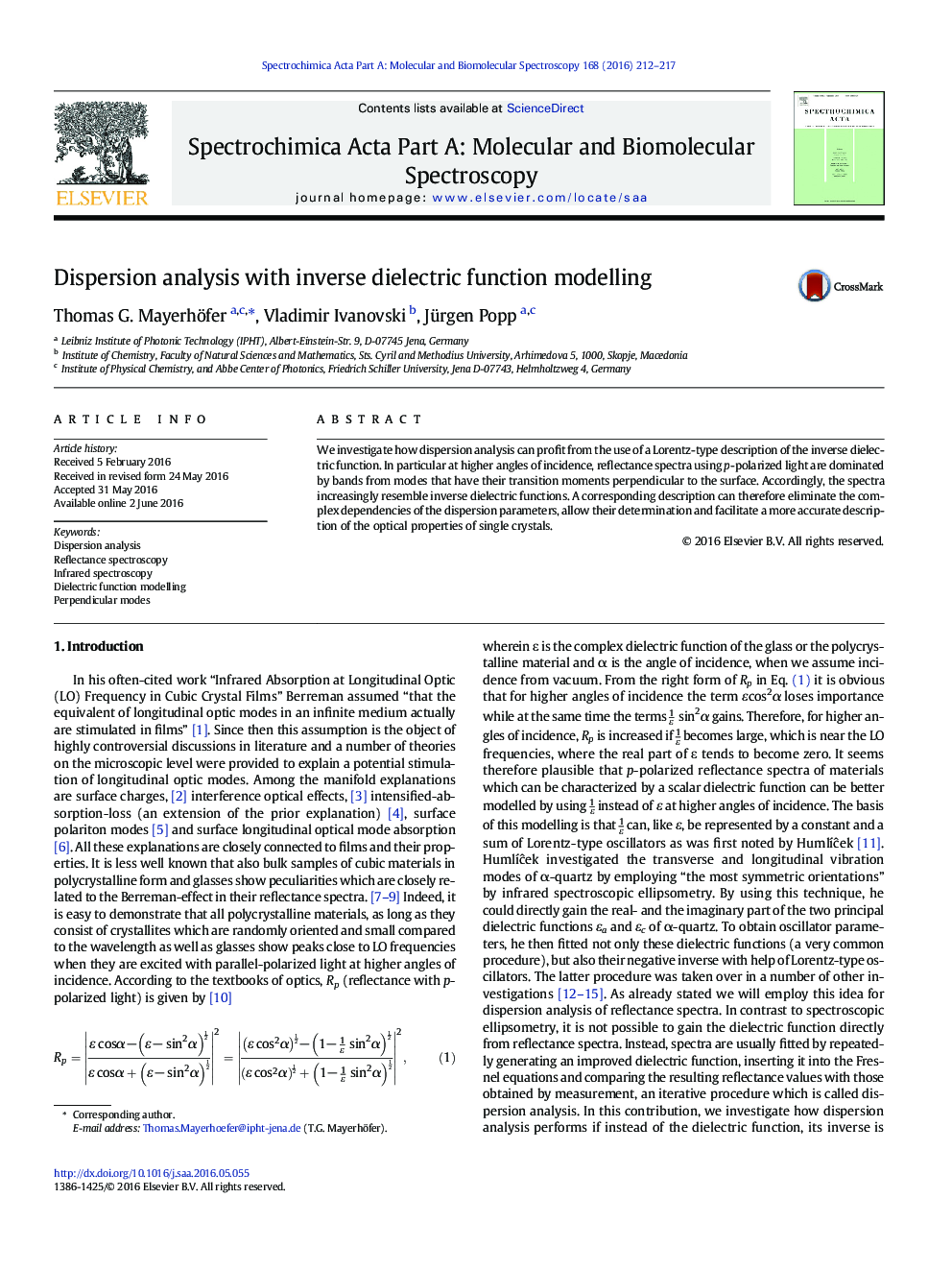| Article ID | Journal | Published Year | Pages | File Type |
|---|---|---|---|---|
| 1230426 | Spectrochimica Acta Part A: Molecular and Biomolecular Spectroscopy | 2016 | 6 Pages |
•The Berreman effect applies also reflectance spectra of bulk materials described by scalar dielectric functions.•For p-polarized light, the reflectance is then increasingly influenced by the inverse dielectric function.•Dispersion analysis can therefore strongly benefit from inverse dielectric function modelling.•In particular p-polarized reflectance spectra can be modelled with higher accuracy.•The dispersion parameters of perpendicular modes can be evaluated with unparalleled precision and easiness.
We investigate how dispersion analysis can profit from the use of a Lorentz-type description of the inverse dielectric function. In particular at higher angles of incidence, reflectance spectra using p-polarized light are dominated by bands from modes that have their transition moments perpendicular to the surface. Accordingly, the spectra increasingly resemble inverse dielectric functions. A corresponding description can therefore eliminate the complex dependencies of the dispersion parameters, allow their determination and facilitate a more accurate description of the optical properties of single crystals.
Graphical abstractFigure optionsDownload full-size imageDownload as PowerPoint slide
